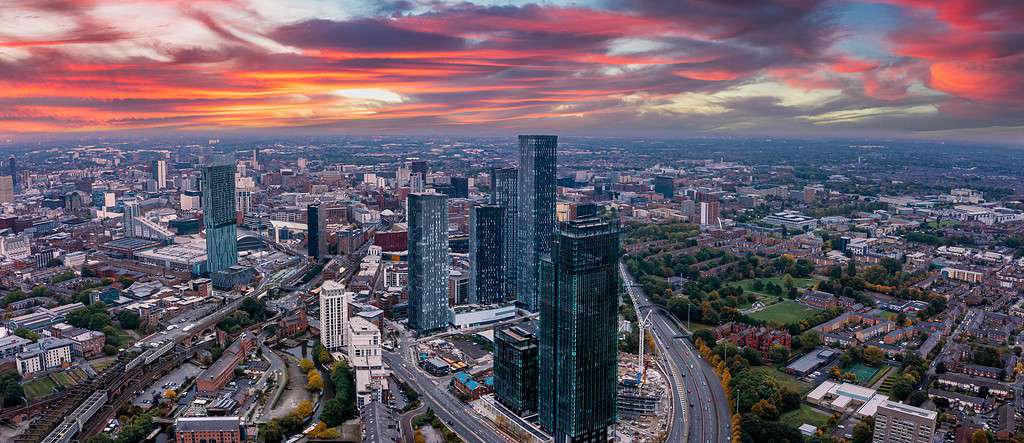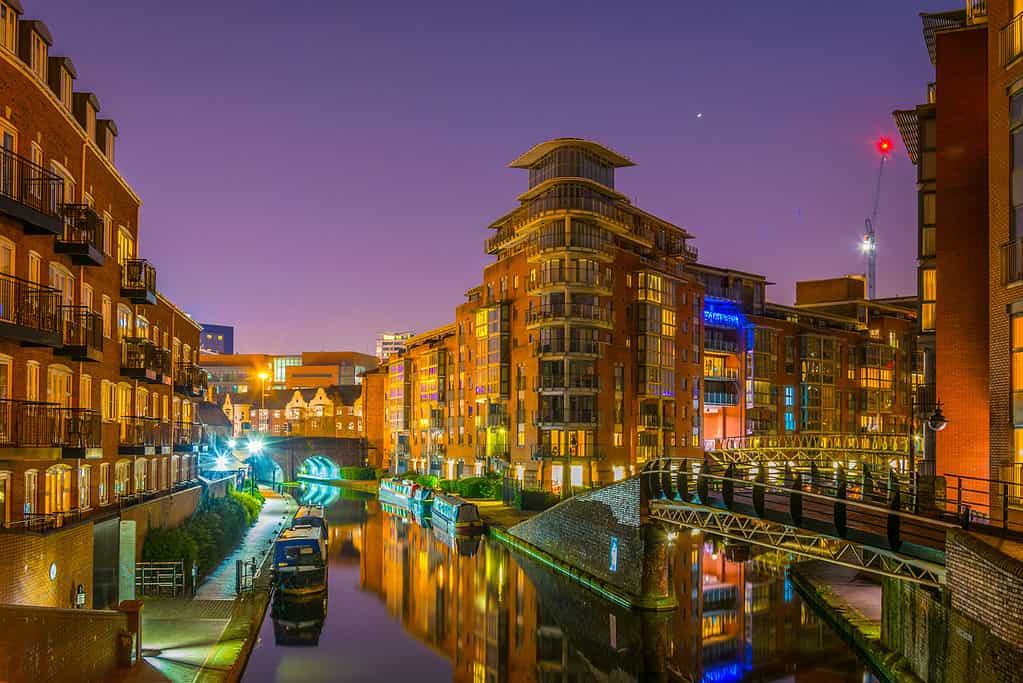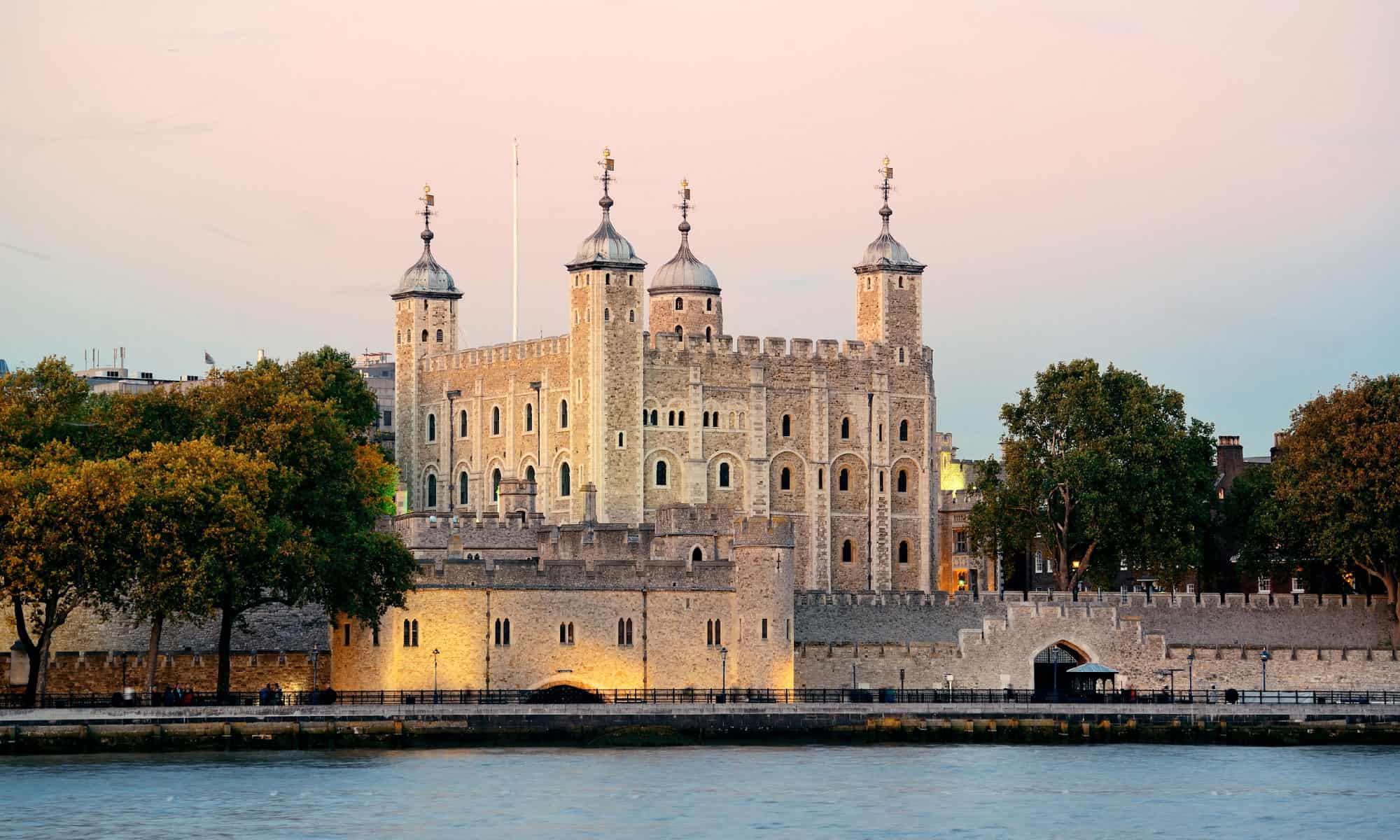The United Kingdom is a nation rich in history, culture, and diversity. It is home to a mosaic of captivating cities that breathe life into its landscapes. From the bustling metropolis of London to the vibrant streets of Manchester, each city has a unique story to tell and a distinctive character that sets it apart. In this article, we embark on an enlightening journey to explore the largest cities in the United Kingdom. We will delve into their captivating features, cultural treasures, and economic significance.
Why should readers be enthralled by the prospect of uncovering the wonders of these urban centers? The answer lies in the unparalleled tapestry of experiences that each city weaves. These dynamic hubs are epicenters of innovation, culture, and opportunity. They offer a multitude of reasons to pique the curiosity of intrepid travelers, aspiring residents, and armchair explorers alike.
By understanding the largest cities in the United Kingdom, one can gain a deeper appreciation for the multifaceted nature of this captivating country. The cities represent not just a concentration of population but a convergence of heritage, architectural marvels, thriving industries, and a vibrant arts scene that reverberates through their streets.
It’s worth noting that populations change in size and cities can sometimes change in square mileage. Just as well, it is not possible to provide an exact number of populations in some cities in the United Kingdom, as many official census numbers are outdated. The numbers in this article are as accurate as possible given the sources.
The Largest Cities in the UK by Population
| # | City | Population | Population Density (Per Square Mile) |
|---|---|---|---|
| 1 | London | 11,262,000 | 18,553.54 |
| 2 | Manchester | 2,767,000 | 11,368.12 |
| 3 | Birmingham | 2,643,000 | 11,431.66 |
| 4 | Leeds-Bradford | 1,916,000 | 8,995.31 |
| 5 | Glasgow | 1,270,000 | 8,924.81 |
| 6 | Southampton-Portsmouth | 932,000 | 2,685.11 |
| 7 | Liverpool | 940,000 | 10,070 |
| 8 | Newcastle | 726,000 | 2,373.97 |
| 9 | Nottingham | 694,000 | 10,205.88 |
| 10 | Sheffield | 640,000 | 9,846.15 |
London
We can’t talk about the largest cities in the UK without talking about London! London, the capital of the UK, has the largest population and population density of any city in the country. London is a city nestled along the Thames. It has seen steady population growth as a result of its prominence as a worldwide economic powerhouse. But why precisely is this city so crowded with people?
Its historical importance is one of the factors to consider. London has served as the hub of British politics, culture, and economy for centuries. It has drawn individuals from all across the country and the world, creating a rich melting pot of cultures.
Just as well, London has a ton of career possibilities, particularly in the financial, technological, and creative sectors. More people move to the city for employment because of its advantageous location, which attracts worldwide firms.
The standard of living and the attraction of living in a major city are also factors. World-class colleges, museums, restaurants, theaters, and parks abound throughout the city, adding to its allure. London’s population size and density are evidence of the city’s economic might, cultural diversity, and possibilities, which attract people from all over the world like a magnet.

London is the capital of the UK as well as its most densely-populated city.
©Csaba Peterdi/Shutterstock.com
Manchester
Manchester is the city with the second-highest population and population density in the United Kingdom. Anyone who lives in the city or has visited knows quite well that it is packed with people. But why do so many individuals choose to reside in this city?
Manchester has been positioned as a city of opportunity because of its historical significance as an Industrial Revolution hub. It has drawn people from many walks of life, creating a solid and varied demographic base that is still growing.
Manchester is a significant economic hub in the country. The city benefits from businesses including manufacturing, banking, and more recently, the digital and creative industries. A constant flow of newcomers who want to take advantage of these chances is attracted by the thriving employment market.
The city’s cultural diversity, which is reflected in its thriving music, sports, and arts scenes, also contributes significantly to its allure. The city’s top football teams, Manchester United and Manchester City, draw attention on a global scale. The nightlife and entertainment sectors foster a youthful, energizing vibe.
Education is also a very strong appeal for those living in Manchester. The city draws students from all over the world thanks to prestigious universities like the University of Manchester. The school adds to the diversity and vibrancy of its people. Manchester is a real northern powerhouse because of its economic success, cultural vitality, and possibilities, all of which are reflected in its population numbers.
Birmingham
Birmingham, located in the heart of England, holds the distinction of being the third most populous city in the United Kingdom. Its bustling population is as diverse as it is dense, but what factors contribute to this?
One significant factor lies in Birmingham’s rich history. From its days as a market town during the medieval period to its transformation during the Industrial Revolution, Birmingham has always been a city on the move. This dynamic nature has attracted generations of inhabitants.
Furthermore, Birmingham’s economy, with its strong roots in manufacturing and its growing sectors in retail, tourism, and the digital industry, provides a multitude of employment opportunities. People from all corners of the globe flock to the city, seeking career growth and stability.
Another attraction is Birmingham’s renowned cultural landscape. The city is a melting pot of different cultures, resulting in a vibrant mix of music, arts, and food that resonates with residents and visitors alike.
Just as well, the city’s robust educational institutions, like the University of Birmingham, draw a large student population. These individuals often stay post-graduation, contributing to the city’s intellectual capital and population.
In essence, Birmingham’s high population and density are a testament to its robust economy, rich cultural scene, and excellent educational opportunities, drawing people to it like a beacon in the Midlands.
The Largest Cities in the UK by Total Area
| # | City | Land Area (Square Miles) | Geographic Features |
|---|---|---|---|
| 1 | London | 607 | River Thames, Hyde Park |
| 2 | City of Carlisle | 401.53 | River Eden, the border between England and Scotland |
| 3 | Manchester | 243.4 | Irwell River, Pennines |
| 4 | Birmingham | 231.2 | Canal Network, Clent Hills |
| 5 | Leeds | 213 | River Aire, Yorkshire Dales |
| 6 | Swansea | 150 | Swansea Bay, Mumbles Head |
| 7 | Glasgow | 142.3 | River Clyde, Campsie Fells |
London
London not only boasts about its high population density but also its vast land area, making it the largest city in the country. This sprawling metropolis extends over 600 square miles, but why is London’s expanse so vast?
Firstly, its historical development played a significant role. Starting as a Roman settlement two millennia ago, London has progressively expanded, swallowing nearby towns and villages. This organic growth, spurred by waves of economic and population expansion, led to the city we see today.
Secondly, its designation as the political, economic, and cultural hub of the country led to the expansion of infrastructure and housing. The construction of roads, buildings, and various landmarks over centuries contributed to London’s spread.
Just as well, London’s strategic location along the River Thames offered natural advantages for trade and transportation. As commerce flourished, so did the city’s size to accommodate the growing demands of trade and population.
Finally, the trend of urbanization and migration towards major cities like London in the 19th and 20th centuries increased its land area. This was facilitated by improvements in transport links, allowing for outward expansion.
Hence, London’s expansive land area is a testament to its historical growth, strategic location, and its status as a global city, making it a symbol of the United Kingdom’s rich past and vibrant present.
City of Carlisle
Situated on the juncture of Scotland and England, the City of Carlisle holds the distinction of having the second largest land area of any city in the United Kingdom. Covering a sizeable stretch of land, this city has a rich history that helps explain its vast size.
Carlisle’s large land area can be partly attributed to its historical significance. Founded as a Roman settlement, it strategically served as a fortress city, expanding over time to accommodate military and civilian growth.
Geographical factors also played a vital role. Nestled between the scenic landscapes of the Lake District and the Scottish Borders, Carlisle expanded to include rural landscapes, resulting in a city that is both urban and pastoral.
Just as well, Carlisle’s development as a key transportation hub contributed to its size. It served as a gateway to Scotland and was a crucial link in the West Coast Main Line railway. This fostered growth, as areas around transportation routes often expand due to increased economic activity.
Lastly, administrative decisions to incorporate surrounding villages and towns into the city’s jurisdiction led to a surge in its land area.
To sum it up, Carlisle’s impressive land area is a product of its historical importance, geographical location, transportation significance, and administrative expansions, making it a uniquely large city in the United Kingdom.
Manchester
Situated in the heart of the United Kingdom, Manchester commands the third-largest land area among all British cities. Its significant expanse is not an accident of fate, but rather the product of historical, geographical, and economic factors that have shaped it over time.
Manchester’s story began during the Roman era, but its real growth spurt occurred during the Industrial Revolution. Known as the world’s first industrialized city, Manchester expanded rapidly to accommodate burgeoning industries and a growing workforce. Its borders stretch far and wide.
Its strategic location also contributed to its expansion. Located at the intersection of the River Irwell and several important trade routes, Manchester became a hub of commerce, attracting more people and requiring more space.
The city’s evolution as a transportation powerhouse is another piece of the puzzle. The development of canals, railways, and road networks encouraged growth, as areas of commerce and habitation sprung up along these vital arteries.
Just as well, administrative decisions to incorporate surrounding towns and areas into Manchester led to an increase in its land area.
Manchester’s impressive size is a testament to its rich history, its geographical advantages, its importance as a transport hub, and its administrative evolution, all of which have contributed to making it the sprawling city we see today.

Manchester is the second-largest city in the UK.
©RAW-films/Shutterstock.com
The Largest Cities in the UK Ranked by Economic Output
| # | City | GVA (£ millions) | Key Industries |
|---|---|---|---|
| 1 | London | 378,424 | Banking, Creative industries |
| 2 | Birmingham | 122,000 | Manufacturing, banking, tech |
| 3 | Manchester | 59,000 | Creative industries, banking, healthcare |
| 4 | Leeds | 21,260 | Banking, tech, retail/consumer goods |
| 5 | Glasgow | 19,624 | Banking, creative industries, energy, engineering |
| 6 | Edinburgh | 18,437 | Banking, tourism, education |
| 7 | Tyneside | 18,224 | Manufacturing, healthcare, and creative industries |
| 8 | Bristol | 13,862 | Aerospace, engineering, banking, creative industries |
| 9 | Sheffield | 11,300 | Manufacturing, healthcare, creative industries |
| 10 | Cardiff | 11,044 | Banking, creative industries, tourism |
London
It comes as no surprise that London is the UK’s economic powerhouse. This thriving capital, which has the biggest economic output in the country, is a haven of prosperity. But what makes London such an economic success tale?
First off, it’s impossible to overestimate London’s historical importance. It has long been a hub of trade and a worldwide metropolis. Thus, attracting money and investment from all over the world.
Second, the city of London’s geographical position is important. It serves as a hub for worldwide commerce and finance because of its advantageous location halfway between the American and Asian financial markets. Due to this, the city has started to attract large firms and the financial industry. This includes the London Stock Exchange, one of the oldest in the world.
London’s highly trained and diversified workforce is also a key factor in the city’s economic success. It attracts and generates high-quality talent that drives innovation and growth in areas including technology, the creative industries, and professional services thanks to its world-class universities and research institutes.
The hub it serves as for culture and tourism also generates a sizable amount of income. Millions of tourists visit the city every year. The tourist industry bolsters its economy thanks to its rich history, recognizable sites, and active arts scene.
London is a powerhouse of the UK economy because of its historical significance, strategic position, skilled workforce, and rich cultural appeal. In essence, its outstanding economic production is a tribute to these factors.
Birmingham
The second-highest economic production in the United Kingdom is recorded in Birmingham. It is frequently referred to as the heart of the English Midlands. Birmingham is not just one of the largest cities in the UK and its strong economy is not an accident. It is the product of a confluence of historical, geographic, and social elements.
Birmingham’s role as a major actor throughout the Industrial Revolution paved the way for its present-day prosperity. Especially in the metal sector, its extensive manufacturing base drew money and fueled expansion. Manufacturing is still a key component of the local economy today. The automotive and aerospace industries receiving a lot of attention.
Geographically, Birmingham has advantages from being in the middle of the country, with great access to other UK cities. This, together with its robust transportation system, makes it a prime center for business and trade.
Another element supporting the city’s economic growth is its investment in education and skill development. A thriving and diversified local economy is supported by organizations like the University of Birmingham. It cultivates talent across a variety of industries, particularly in technology, medicine, and professional services.
Birmingham’s famous Symphony Orchestra and well-liked football clubs, among other cultural and athletic attractions, encourage tourism and related economic activity.
In essence, Birmingham’s economic strength is a reflection of its industrial past, geographical position, investment in talent, and cultural vibrancy. Thus, securing its place as a significant economic force in the United Kingdom.

Birmingham is known for its many successful industries.
©iStock.com/trabantos
Manchester
As one of the largest cities the UK has to offer, Manchester holds the distinction of having the third-highest economic output in the United Kingdom. This success is due in part to its rich industrial history. During the Industrial Revolution, Manchester was a powerhouse of textile manufacturing, laying a strong foundation for its economic prowess.
Today, the city is a hub for sectors such as finance, digital technology, and creative industries, attracting businesses and talent alike. Its excellent transport links and the presence of prestigious universities further fuel its economic growth. Thus, Manchester’s economic success is a blend of its historical industrial strength, diverse modern sectors, and strategic resources.
In conclusion, exploring the largest cities in the United Kingdom provides a fascinating insight into the nation’s rich tapestry of history, geography, and socio-economic development. London, Birmingham, and Manchester, with their expansive land areas, dense populations, and impressive economic outputs, offer compelling narratives of urban growth and transformation.
Understanding why these cities are so large and economically successful sheds light on key factors that drive urban expansion and prosperity. These factors range from historical significance and strategic location to diverse economic sectors and cultural richness. The lessons learned from studying these cities can inform urban planning and development strategies, fostering sustainable growth and inclusivity.
Thank you for reading! Have some feedback for us? Contact the AZ Animals editorial team.








